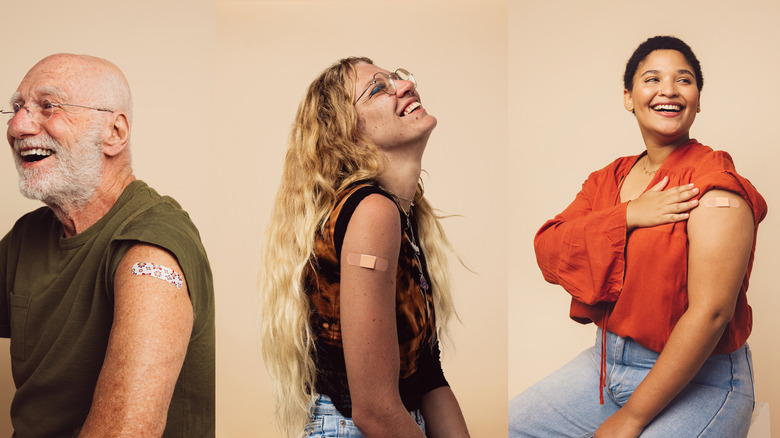How Many Deaths Has The COVID Vaccine Actually Prevented?
In 2021, according to the U.S. News & World Report, COVID-19 was the third most common cause of death in the U.S., responsible for 415,000 deaths. However, it turns out that this number could have been even larger if not for vaccines. A recent study published in The Lancet Infectious Diseases concluded that nearly 20 million deaths were averted globally from December 2020 to December 2021 because of the vaccines (via Stat).
The first dose of the vaccine was distributed on December 8th, 2020 in England (via CBS News). Within a year, the vaccine had reached over 4.3 billion people throughout various parts of the world. Researchers point out that by December 2021, around 45.5% of the global population had received two doses, while 55.9% had received at least one dose (via WebMD).
This groundbreaking study was unlike prior research as it examined death averted globally from the virus. Lead researcher Oliver Watson of Imperial College London explained to CBS News that the effectiveness of the vaccines "quantify just how much worse the pandemic could have been if we did not have these vaccines."
How did the researchers calculate this number?
To calculate this number, the researchers studied a COVID-19 transmission model in 185 different countries (per CBS News). They took into consideration what we now know about the virus and vaccines, and subtracted the number of estimated COVID-19 deaths in the observed scenario from the number of estimated COVID-19 deaths if no vaccines were available (via Stat).
Per CBS News, the findings estimated that vaccines prevented 1.9 million deaths in the U.S, 4.2 million in India, 1 million in Brazil, and 507,000 in the United Kingdom. The total number of deaths prevented was between 14.4 and 19.8 million globally, depending on whether the researchers focused on overall excess mortality or solely on officially reported COVID-19 deaths. Watson tells Stat, "We knew it was going to be a large number, but I did not think it would be as high as 20 million deaths during just the first year."
However, Forbes shares that around 600,000 additional lives could have been saved if every country was able to vaccinate at least 40% of its population, which was the World Health Organization's vaccination goal. One of the biggest problems countries had when trying to reach this goal was the cost of the vaccine agreements. Wealthier countries could afford higher vaccine purchasing agreements, while lower-income countries could not, per WebMD. Limitations of the study include the timing of new variants, limited access to data, and how vaccine types or proportions played a role.


